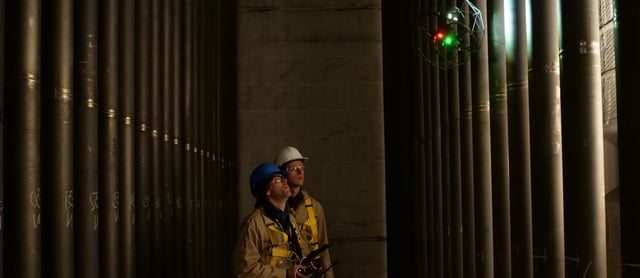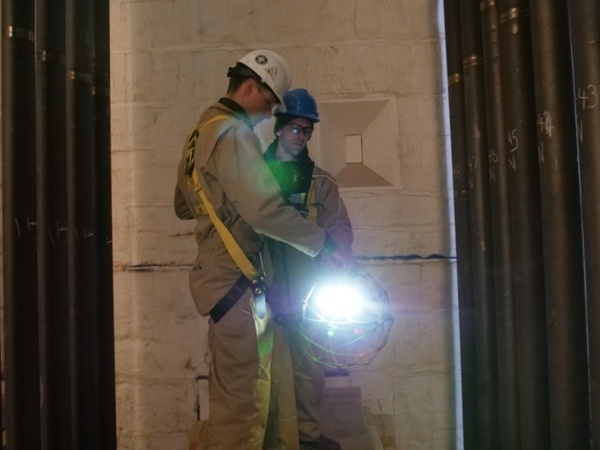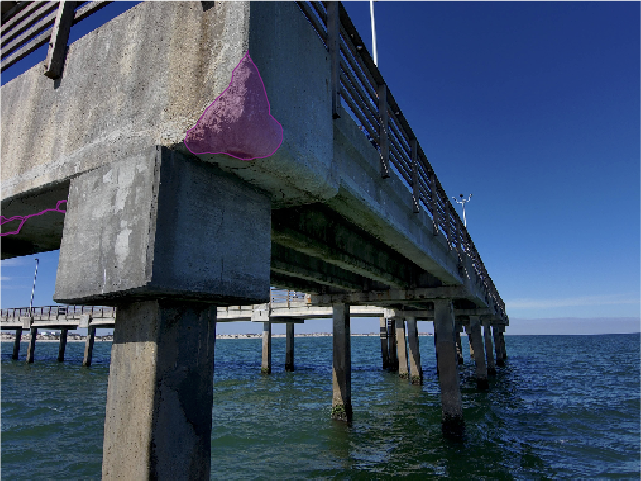Accessing and inspecting the confined spaces in the oil and gas industry, construction sites and other facilities can be challenging. These tasks are usually dangerous, time-consuming and costly. The confined spaces presents potential risks such as workers getting stuck, exposure to toxic gases, liquids, chemicals and more. Further, even after gaining access, the limited space may hinder the worker’s movements and ability to perform comprehensive and effective inspection.
To overcome these challenges, the companies in petrochemical, oil and gas begin use drones or robots to safely access and inspect the confined spaces such as tunnels, pipes, ducts, tanks, chimneys, and others. And the recent advances in the sensor and drone technologies now allow easier and safer inspections of both normal and difficult environments.
Challenges of using the traditional confined space inspection methods
Although some confined spaces may appear safe to work in, they may carry several life-threatening risks. Most often, the traditional methods expose the inspectors and workers to several hazards that range from the dangerous gases and chemicals to poor visibility and communication.
A confined space has a restricted or limited means of entry or exit, and usually, not suitable for continuous occupancy by a human. Further, the traditional inspection methods require more planning, specialized skills, equipment, as well as additional labor and time to access or dismantle the system.
Other than the physical challenges, the confined spaces may be contaminated, or contain hazardous gases, chemicals, or inadequate oxygen, such that the worker going inside will require expensive protective clothing and breathing aids.
Working in such conditions will also limit the inspectors movement’s and ease of handling the test equipment.
The difficult spaces require more investments compared to the open spaces. This includes special skills, work procedures, equipment and safety measures. All these end up adding to the cost of performing the tasks.
While it is not entirely possible to replace all the tasks the traditional confined space inspection methods, the maintenance personnel can use drones to perform the preliminary visual inspections at lower risks, costs and minimum shutdowns.
Drones for confined space inspections
The exercise requires superior features that enable the UAVs to access the locations that regular drones cannot. Unlike the regular spaces, the confined space inspections require special drones and software. Although, the construction may differ from one application to the other, the technology should provide a means of controlling the drone beyond the line of sight since the confined spaces may be in hidden locations. Further, the drones must have collision tolerant features in order to effectively move around.
As such not all drones are suitable for the difficult environments. The confined space inspection drones are usually equipped with on-board LED lighting, high definition cameras and housed in collision tolerant carbon fiber cage. In addition, some can be operated remotely from locations beyond the line of sight without using GPS.
A common UAV for these tasks is the Flyability Elios inspection drone. This has additional features such as a thermo vision camera, high-resolution photo cameras, LED lighting, and an easy navigation technology that enables a user to collect visual and thermal images in dark confined spaces.
The Elios "ball" drone has a gyroscope technology and is usually enclosed in a carbon fiber protective cage that enables it to maneuver and inspect complex structures without damaging the sensors or other components. The Elios provides the operator with a live video feed that gives an assessment of the conditions in the space under inspection. This enables the operator, or technical people in a remote office, to assess the condition and determine if there is an issue or point of interest requiring attention.
Some drones may use laser guidance technology to obtain ultra-high resolution images from the confined environment.
Benefits of using drones for confined space inspection
The drones are designed to easily navigate and operate safely in a wide range of confined spaces. This includes dark or contaminated areas and places such as culverts, ducts, manholes, inspection pits, boreholes, excavations, sumps, storage tanks, boilers, furnaces, stacks, and more. Some benefits of drone-based inspections include;
Reducing inspection costs and time
A drone inspection reduces or eliminates the need to acquire, assemble or mount the rope access methods or scaffolding, breathing aids, protective clothing and other special equipment for the difficult-to-reach and confined spaces. A drone performs the inspection at a fraction of the time and cost of a traditional method, hence saving companies money and time.
Besides the time and cost savings, the drone provides a comprehensive data quickly to enable the maintenance teams to make prompt decisions via drone inspection software. Depending on the status of the equipment or structure, the team can either decide to repair or replace if the system is beyond rehabilitation. This indirectly saves the company money and time it could have spent trying to access the space using the traditional means, only to find out that it is beyond repair.
Easy to transport to field
The drones are lightweight devices that can easily fit in the back of a normal car. This means that there is no requirement to acquire or hire trucks to transport it to the field. In addition, they do not require large runway-strips and some have enhanced features such as vertical takeoff or landing, hence requiring a small launch space.
Reducing confined space inspection time
The drone typically takes less time to launch and complete a typical petrochemical, oil, and gas infrastructure inspection exercise. Special drones such as the Elios takes about one hour to complete an inspection that would traditionally take a day or more to plan, acquire equipment and execute.
Better maintenance and reduced downtime
The easy access to the status of the facilities not only translates to lower inspection costs, but also better management of the assets and a reduction in unscheduled shutdowns due to unforeseen failures.
Since it is easy and quick to launch a drone, the maintenance teams can perform regular low-cost inspections without affecting other operations. This enables them to identify and mitigate any issues before they lead to problems.
Having up to date information enables the management to make better maintenance or upgrade decisions while eliminating surprise failures, expensive repairs, and loss of production.
Flexibility and ability to collect comprehensive data
The drones are available in different physical sizes and can be equipped with several different sensors to conduct visual, thermal and other tests in the confined spaces.
A drone can, therefore, carry out a visual inspection of the surface while taking photos and sometimes videos, check for insulation problems using the thermal imaging sensors, check gas or liquid leaks and so on. The high-resolution sensors and ability to get very close to the test area allow them to sometime gather more detailed information that a human inspector may not be able to obtain.
Improved safety
Unlike the traditional methods where the inspector works in risky and restricting conditions, the drone will access the confined spaces and eliminate the need for a human worker.
The drones can safely fly to, access, and inspect confined spaces as well as other hazardous environments. This removes the human element and the need for a worker to spend time in the confined or dangerous environment, hence reducing the risks, accidents or exposure to toxic gases and hostile conditions.
The remote operation reduces the need for human entry into the dangerous environments and this lowers the cost and time for the inspection while increasing the safety and health of the workers.
Conclusion
Using drones to inspect confined spaces reduces the time and cost of planning, equipment, and labor while minimizing the risks to human workers in the confined spaces.
The drones are ideal for spaces that would traditionally require expensive and high-risk inspections, specialized and costly equipment and tools. In addition, the drones provide high quality and comprehensive data critical for effective planning for the maintenance. Due to the low costs, the companies can perform more frequent inspections, hence make better maintenance decisions.
Tags
Oil and Gas





.png)
